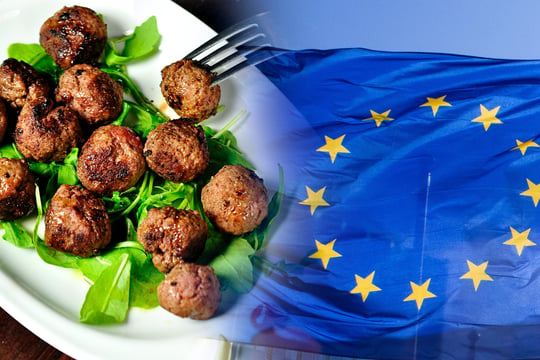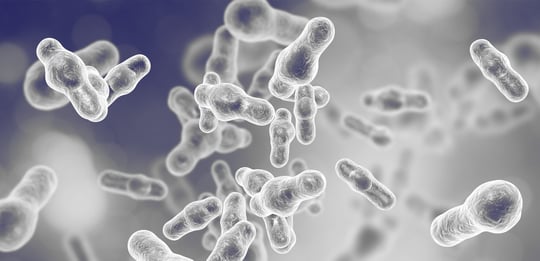
On 24 September 2025, the Scientific Committee of the European Food Safety Authority (EFSA) adopted a new Guidance on the characterisation of microorganisms in support of the risk assessment of products used in the food chain.
This guidance fully or partially replaces several previous guidance documents related to the safety assessment of microorganisms used in the food chain, whether they are genetically modified or not. Most notably, it supersedes the parts covering the characterisation of microorganism in the earlier guidance for novel foods, feed additives, food enzymes and food additives. It also replaces overlapping sections of the 2011 guidance on genetically modified microorganisms (GMMs). The new document consolidates microbiological safety criteria—such as identity, antimicrobial resistance (AMR), production of antimicrobial substances, toxigenicity and pathogenicity, genetic modifications, presence of viable cells and DNA in the final product, and environmental risk assessment into a single, harmonised framework.
It is worth noting, however, that there are also areas where this guidance is not fully applied, including microbial plant protection products, biostimulants, biocides, cleaning agents and cosmetics.
Unified scope and consistent standards
The 2025 guidance applies to all microorganisms used in the food chain, whether they are used as active agents (e.g. probiotics), for biomass production, or as production strains (e.g. for enzyme or small molecule production). It covers bacteria, yeasts, filamentous fungi, microalgae and other protists, and viruses including bacteriophages. This consolidation allows applicants to prepare one core safety dossier for a microbial strain and adapt it for different uses, such as feed, food, or processing aids. EFSA’s panels now apply consistent standards, improving predictability and reducing cross-referrals.
QPS and non-QPS strains
The guidance clarifies how to verify QPS qualifications and explicitly extends the QPS approach to certain GMMs. For example, if the parental species is on the QPS list and the genetic modification does not raise safety concerns, the QPS approach can be applied. Similarly, if a gene of concern is removed through genetic modification and no other safety issues remain, the strain may qualify for QPS status.
Non-QPS strains must undergo a full safety assessment, typically including some toxicological studies. The 2025 guidance provides a consistent framework for these cases, replacing the need to interpret multiple previous documents.
Taxonomic identification
For bacteria, yeasts, filamentous fungi and viruses, the taxonomic identification should be established based on whole genome sequence (WGS) data analyses. This expands the requirement of WGS to filamentous fungi. For microalgae and other protists, taxonomic identification should be performed by combining morphological and DNA sequencing information of selected genetic markers. In EFSA’s view, at the time of the publication of the guidance, the state of the art does not allow to fully rely on the use WGS data for routine identification of microalgae. However, WGS-based identification may be sufficient and assessed on a case-by-case basis. All bioinformatic analyses should not be older than two years at the time of submission of the application.
Antimicrobial resistance: WGS-first and refined MIC testing
The guidance adopts a WGS-first approach for AMR assessment in bacteria and bacteriophages. If an AMR gene is identified, its nature - acquired or intrinsic - must be determined. If the AMR gene is intrinsic, no MIC testing is needed. If the gene is acquired, susceptibility must be tested for the relevant antibiotics. For example, if an erm(B) gene is found, MICs for erythromycin and clindamycin must be analysed. The interpretation of results depends on the species and how it is used in food production:
-
For bacteriophages, any AMR gene is considered a risk.
-
For bacteria, acquired resistance is a hazard. In case of production strains, this can be mitigated by removing viable cells and DNA from the final product.
-
For active agents, a case-by-case assessment is required, especially for species new to food applications.
EFSA has also updated many MIC cut-off values to be species-specific. For instance, Bacillus licheniformis now has a higher cut-off for streptomycin (32 mg/L) than the genus Bacillus in general (previously 8 mg/L).
The guidance also introduces MIC testing for yeasts and filamentous fungi used as active agents or production strains, if viable cells may remain in the final product. Appendix D includes MIC cut-offs for six fungal species. The goal is to ensure that effective antifungal therapies remain available in case of infections. While the cut-off table is an improvement, Biosafe notes that it contains only six species, leaving uncertainty for those species not listed in the table. It is desirable that EFSA updates the table whenever new information becomes available.
Toxigenicity and pathogenicity
The guidance clarifies the workflow for assessing pathogenicity and toxigenic potential. For yeasts and filamentous fungi, the process begins with a literature review and WGS analysis. If either one indicates potential for harmful metabolite production, phenotypic testing is required for active agents, and quantitative analysis in the final product is required in the case of production strains.
These requirements now apply to all microorganisms, including bacteriophages, microalgae, and other protists.
Viable cells and DNA in the final product
The guidance updates requirements for demonstrating the absence of viable cells and DNA from production strains with small adjustments compared to previous guidance:
-
Previously, absence had to be shown in a volume corresponding to 1 g or mL, obtained from a 10 g or mL sample. Now, testing a representative sample of at least 1 g or 1 mL is sufficient. A positive control spiked with ≤100 CFU/g or mL is required.
-
For bacteriophages, the viability of the host strain must be checked.
-
For DNA, the requirement to target a fragment specific to the production strain has been removed. However, the target sequence must still be described.
Genetic modifications and environmental risk
Much of the 2011 guidance on GMMs is now replaced, and their characterisation, even in cases where the product falls under the GMO regulations, is differentiated from genetically modified plants. Further, EFSA uses deliberately a neutral term “produced by GMO”, thus avoiding the ongoing political discussion around inclusion/exclusion of a product from the GMO regulations. The 2025 guidance introduces a categorisation for environmental risk assessment by GM status and way of use (active agent vs. biomass), which clarifies the risk assessment. GM active agents are the major focus while currently none of those are authorised in the EU. Meeting the requirements continues to be challenging for GM active agents.
An open question remains how the requirement for microbiome analysis, which may be needed in some cases, will be applied in the future. A future challenge is to substitute animal testing with more relevant in vitro studies. Improved and new curated databases and standards are in need.
Conclusion
The 2025 EFSA guidance replaces previous guidance documents with one harmonised document that reflects current scientific practices. For companies (and consultancies like Biosafe working with them), this consolidation can streamline dossier preparation – one comprehensive checklist of requirements to follow, instead of juggling different guidance for feed vs. food uses. Having one comprehensive guidance can also improve the efficiency of EFSA’s own assessment process. By aligning criteria across different panels, it reduces the need for internal cross-referrals and combined evaluations, hopefully speeding up authorizations. For industry stakeholders, this means more predictable assessments and faster introduction to market of safe, innovative microbial products.
Biosafe helps new sustainable food & feed solutions get approved and reach global markets. From laboratory to legislation to the latest intelligence.
Read more: Microbial testing – An overview of what it is and what it is for
Topic:











